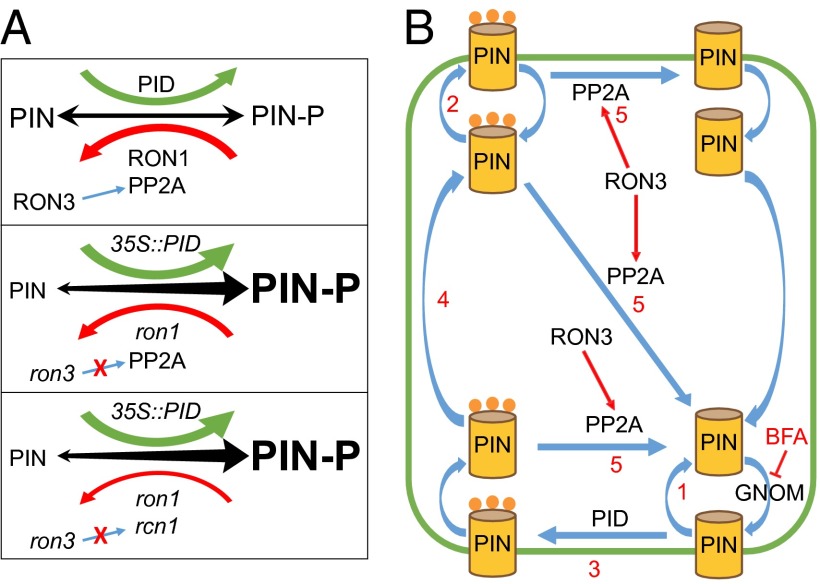Fig. 4.
Cell biology models. (A) Cell phosphorylation dynamics in (Top) WT plants, (Middle) 35S::PID and ron1 plants, and (Bottom) 35S::PID, ron1, and rcn1 plants. PIN proteins shuffle between phosphorylated and nonphosphorylated state after action of PID kinase or RON1 and PP2A complex phosphatases. Combinations of mutation effects can be speculated. Equilibrium is denoted by arrow thickness and letter size. (B) Model of the RON3 action on the PP2A complex. PIN proteins are recycled either (1) basally in unphosphorylated status or (2) apically when phosphorylated. Although the exact PIN (de)phosphorylation is unclear, we suggest that it happens both in plasma membrane and inside the cell. Basal PIN can be (3) phosphorylated by PID kinase, endocytosed at the basal side, (4) transcytosed, and subsequently, exocytosed apically. (5) Phosphorylated PIN proteins are dephosphorylated by the PP2A complex, of which RCN1 is one component. RON3 assists the PP2A complex action, interacting with several of its components (such as RCN1).

